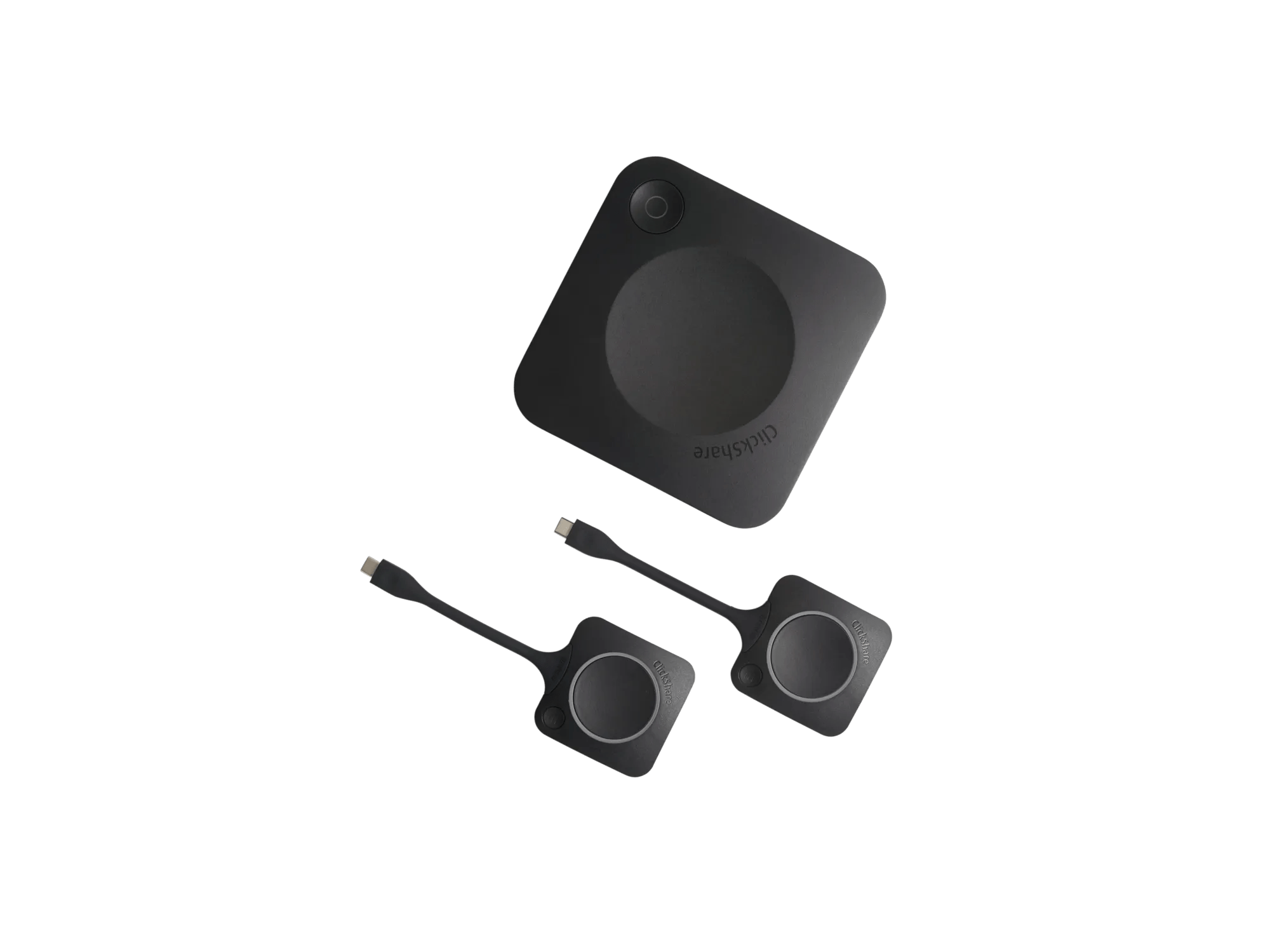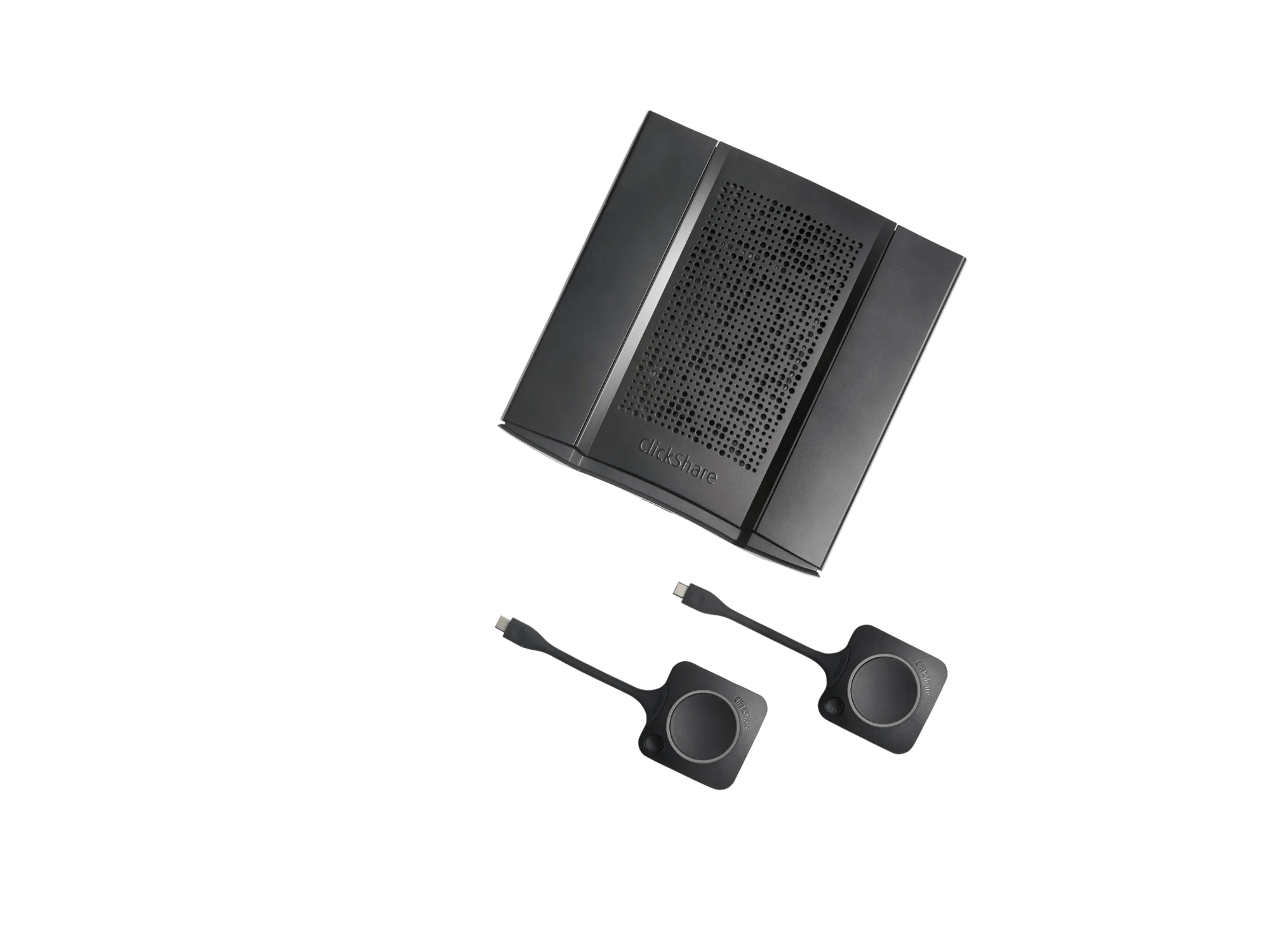Meeting room solutions: 6 questions to ask before investing
6 分钟阅读
A great meeting room is one where technology fades into the background and people can focus on the work that matters. Employees should be able to walk in, connect their laptop in seconds, and collaborate seamlessly with colleagues in the room and online. For IT teams, the ideal setup is one that’s reliable, easy to manage remotely, and transparent when issues arise.
But finding the right mix of cameras, video bars, microphones, speakers, and wireless conferencing tools isn’t always straightforward. How do you make sure your investment supports both productivity and long-term value?
This article explores 6 key questions to ask before investing in a meeting room solution – so you can choose technology with confidence.

1. Is your meeting room solution easy to install?
Ease of installation is non-negotiable – whether you choose a basic setup (an all-in-one video bar and a display), or a complex setup with multiple cameras, speakers, microphones, touch displays and wireless conferencing devices.
Ease of installation will help you quickly deploy the technology, so your conference rooms are ready in no time. But how can you tell a device is easy to install?
Minimal wiring
Fewer and standardized cables such as USB or HDMI or even wireless capabilities. This will speed up installation, reduce drilling, tech challenges, and cable clutter.
Accessible installation and onboarding information
Easy-to-understand user manuals, QR codes on the packaging or the device, short video tutorials, and responsive customer service will make installation go smoother.
Easily scalable and adjustable
Ease of installation is not limited to when you first receive your equipment and deploy it in your meeting rooms. You should also reflect on medium to long-term transformations:
- Can you install other devices next to your existing meeting room setup, such as extension mics, cameras for multiple angle views, extra displays, wireless conferencing devices, etc.?
- Can you completely change your meeting room setup? Say you have a standard, large meeting room and you´d like to turn it into a space for brainstorming and creative interaction?
- Or even move the equipment to another meeting space and reinstall it? Everything without much hassle and expensive adjustments?
2. Is your meeting room solution reliable and secure?
Reliability in meeting room technology refers to how consistently the technology performs without failure over an extended period. This is essential in the hybrid workplace where meeting disruptions delay the order of business, diminish productivity, and lead to disgruntled and disappointed employees.
Several factors contribute to your meeting room tech's reliability:
- Hardware quality: Reliable devices are manufactured using high-quality materials that can withstand regular use and occasional mishaps, such as being dropped or bumped. This includes the durability of both external components and internal electronics.
- Software quality: The software powering these devices should be stable and benefit from regular updates, to improve functionality over time and keep up with evolving standards.
- Simple maintenance, quality service and support: Devices should be easy to maintain, and come with extensive customer support including technical assistance and hardware replacement.
- Security: Your tech of choice must come with compelling security certifications. Make sure that it´s been rigorously tested and that it meets robust encryption standards to guarantee security and confidentiality.
3. Is your meeting room solution user-friendly?
User-friendliness in meeting room technology is essential to ensure that everyone can effortlessly join and participate in meetings. Several elements contribute to making meeting room technology user-friendly:
- Intuitive design for a smooth experience: The technology should have straightforward and clear interfaces, and intuitive controls (for e.g. well-designed buttons, readable screens, simple menus, clear labels) that will allow meeting attendees to start video conferences instantly.
- No training required: The technology should be accessible for a wide range of users to use daily without training, allowing even those with minimal tech skills to operate it efficiently.
- BYOD (Bring Your Own Device) support: Your meeting room technology should allow meeting participants to easily connect using their own devices, be it laptops, tablets or smartphones.
4. Is your meeting room solution flexible?
Flexibility in meeting room technology is essential because it allows easy adaptation to various technologies, meeting formats and participant needs, ensuring productivity and satisfaction regardless of changing requirements.
A flexible conference room solution will:
- be compatible with other meeting room hardware and software. This is what we call interoperability and it is essential. Pick a solution with strong technology partners that can guarantee multiple meeting room devices will function seamlessly together.
- make it easy for people to join a meeting from different devices whether that is laptops, tablets or smartphones.
- allow easy access not only to employees but also guests; all while maintaining the infrastructure security and data confidentiality.
- support multiple videoconferencing platforms (such as Microsoft Teams or Zoom).
- be easily adjustable to fit different meeting room setups.
5. Is your meeting room solution easy to manage and monitor?
Knowing if your meeting rooms are functioning at their best, being able to easily check device status and intervene if necessary, will give you peace of mind, save time and effort.
So make sure your technology comes with a performant management platform that allows remote monitoring and management. But what is it specifically that you should look for?

A complete overview
The platform should present in a clear and visually-appealing way how your install base is functioning at a given moment and any overdue actions you have to take to ensure devices are running at their best.
Instant notifications
Management platforms should alert administrators immediately about issues such as disconnected cables or overheating units, to act quickly, decrease downtime and maintain operational continuity.
Integrated data analytics
Access to data will open the way for understanding employee meeting behavior, optimizing workspaces and increasing Return on Investment on the technology you worked so hard to implement. Among many others, here are four key questions you will have an answer to:
- Are workers adopting meeting technology?
- Is that happening company-wide or only in some locations?
- Are some meeting spaces underutilized? If yes, now you can investigate why and optimize your spaces.
- Do employees prefer hybrid meetings or do they meet face-to-face?
6. Is your meeting room tech environmentally friendly?
About 70% of organizations say that AV investments will be essential to their ESG (environmental, social and governance) strategy. Are you too looking to invest in meeting room devices that lower energy consumption and reduce your organization's carbon footprint?
Make sure your meeting room solution of choice has a low carbon footprint or, even better and more impressive, is carbon neutral.
How can you tell your meeting technology has a lowered carbon footprint?
- Energy efficiency: Check if your technology has low power consumption whether in usage or in standby mode.
- Uses the right materials: Look for devices made from recycled or sustainably-sourced materials.
- Packaging and logistics: Ensure low carbon footprint choices such as packaging made of recycled materials and sea transportation instead of air.
- Designed for recycling: Check if the components are easy to disassemble and recycle and if the organization has a recycling program for its products.
As you consider the sustainability of a piece of technology, examine manufacturers' environmental claims. Not all claims may hold up under scrutiny, so look for devices with robust credentials confirmed by independent third parties such as those from the ISO 14000 environmental management standard.
What about a carbon-neutral solution?
A solution is considered carbon neutral when the net carbon emissions released throughout its entire lifecycle – from production to disposal – are reduced to zero. This entails reducing emissions as much as possible and then balancing out the remaining emissions by investing in carbon offset activities.
These activities include:
- renewable energy projects
- reforestation or afforestation
- restoring coastal and marine ecosystems
- regenerative agriculture
- other carbon capture and storage methods
What's more, the process involves third-party certification by independent organizations. Certifications will provide credibility and transparency, reassuring consumers and stakeholders that the product is truly carbon-neutral and truly enacts climate action.

Pieter Vancoillie
Product Manager, Meeting Experience
Pieter holds a MSc in engineering informatics, has been active in information technology for 12 years and is working for the Barco company since 2017. He has been leading innovation projects in various markets such as public governance, healthcare, ed tech and now workplace technology. As a product manager for ClickShare, he plays a key role in defining the strategic vision for future product development and shaping a successful business.









